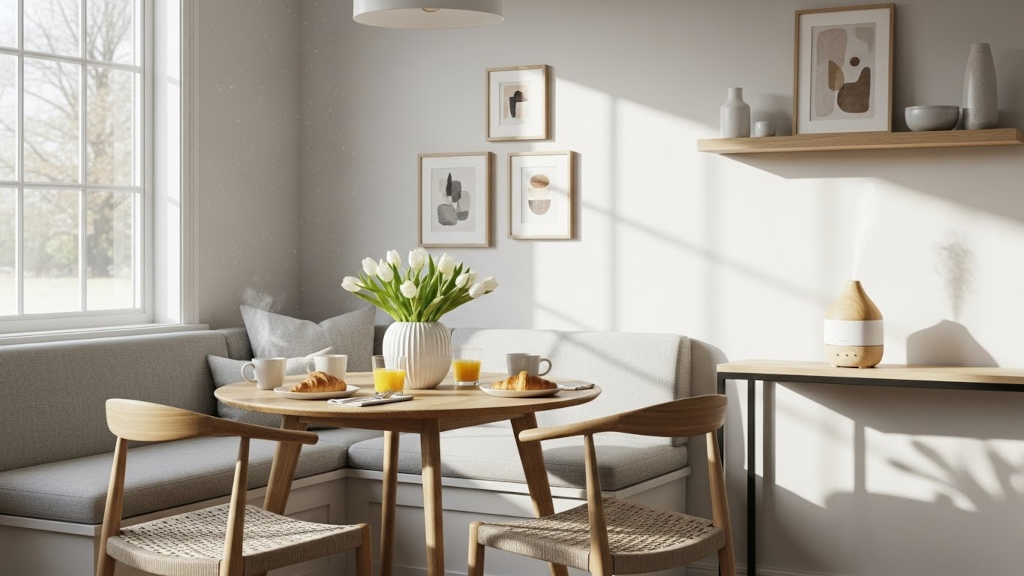A well-scented bathroom can feel fresh, elegant, and quietly inviting. However, it is surprisingly easy to make choices that turn this personal space into something overpowering or unbalanced. Fragrance in a bathroom requires a light touch, a thoughtful approach, and a sense of how certain notes and methods behave in a moisture-rich environment. When done right, scent elevates the room without drawing too much attention to itself. When done wrong, it can feel artificial, cloying, or out of place.
Why Bathroom Fragrance Requires a Different Strategy
Bathrooms are small, enclosed spaces with frequent humidity changes. This makes them very different from living rooms or bedrooms when it comes to fragrance selection. A fragrance that works beautifully in an airy sitting area can become too concentrated in a bathroom, simply because the walls and moisture trap scent more effectively. This is why diffusion strength, oil composition, and note selection must be handled with more precision.
Avoiding Overused Fragrance Notes
One of the most common bathroom fragrance mistakes is relying on notes that have been used so often they now feel generic. Sharp lemon-cleaner scents, overly sweet vanillas, and heavy florals can all create an atmosphere that feels more like a cleaning aisle than a serene retreat. The problem is not the lemon, vanilla, or floral profiles themselves, but the way they are often overdone or paired with synthetic undertones that lack depth.
Instead, a bathroom benefits from fresh yet layered scents. Citrus should be bright and natural, more like zest than sugary juice. Florals should feel dewy and green rather than dense and perfume-like. This approach keeps the space feeling refined rather than forced.
The Pitfalls of Synthetic Sprays and Candles
A large number of bathroom fragrances come in the form of aerosol sprays or heavily perfumed candles. These may seem convenient, but they often introduce harsh chemical notes or smoke into the air, which can be unpleasant in a small, closed space. Aerosol sprays also tend to create a quick burst of scent that disappears rapidly, leaving behind a faint synthetic trace.
Candles, while romantic in some settings, are not ideal for bathrooms. They require an open flame, which can be unsafe in a room where towels and other fabrics are close by. The warm, damp air in bathrooms can also interfere with how a candle burns and diffuses, leading to uneven scent release and sooting.

When Floral and Citrus Clash
It might seem natural to combine floral and citrus notes to create a fresh and clean bathroom scent, but this pairing often goes wrong. If the citrus is too sharp and the floral too heavy, they can compete rather than complement each other. The result is a fragrance that feels busy and inconsistent, with no clear identity.
The solution is to let one profile lead. For example, a soft white floral with just a hint of mandarin can feel beautifully balanced. Or a bright bergamot with a whisper of jasmine can read as both refreshing and elegant without feeling crowded.
Why Cold Air Diffusion Works Best
Cold air diffusion is a far more refined option for scenting a bathroom. It uses no heat and no water, which means the integrity of the fragrance oils is preserved. This method also allows for controlled scent release, so you can adjust intensity to suit the space and the time of day.
Diffusion works by breaking fragrance oils into a fine, dry mist that stays suspended in the air longer than a heated or sprayed scent. This creates a consistent, even atmosphere without overwhelming the senses. In a bathroom, where subtlety is essential, this level of control is invaluable.
Choosing the Right Bathroom Fragrance Oils
When selecting fragrance oils for a bathroom, think of clarity, lightness, and balance. Crisp herbal notes like eucalyptus or rosemary can bring a spa-like freshness. Soft citrus like neroli or bergamot feels uplifting without sharpness. Delicate florals such as lily or freesia can add a touch of elegance without tipping into perfume territory.
Avoid anything too sugary, smoky, or powdery, as these can feel heavy in a small space. And remember that in a bathroom, less is more. The goal is to create an impression of freshness and calm rather than making the fragrance the main focus.
How to Layer Without Overcomplicating
Layering in a bathroom should be minimal. Rather than mixing multiple oils at once, consider alternating between two scents over the week. This keeps the nose engaged while maintaining clarity in the space. For example, a soft herbal-citrus blend in the morning can energize, while a floral-green blend in the evening can soothe.
The key is restraint. Bathrooms are sensory reset spaces, and the fragrance should reflect that. A well-curated rotation can keep the room inviting without ever feeling repetitive.
The Final Word on Bathroom Fragrance
The best bathroom fragrances feel effortless. They are chosen with intention, diffused with precision, and adjusted to suit the unique qualities of the space. Avoiding overused notes, steering clear of synthetic sprays and candles, and balancing profiles with care ensures your bathroom feels like a private retreat rather than an afterthought.
By using cold air diffusion, you can create a subtle yet consistent scent that reflects your personal style while supporting the room’s function. In a space as personal as a bathroom, the right fragrance can transform the atmosphere into something quietly luxurious, where freshness and elegance always meet.
Related Reading: Bathroom Scenting








